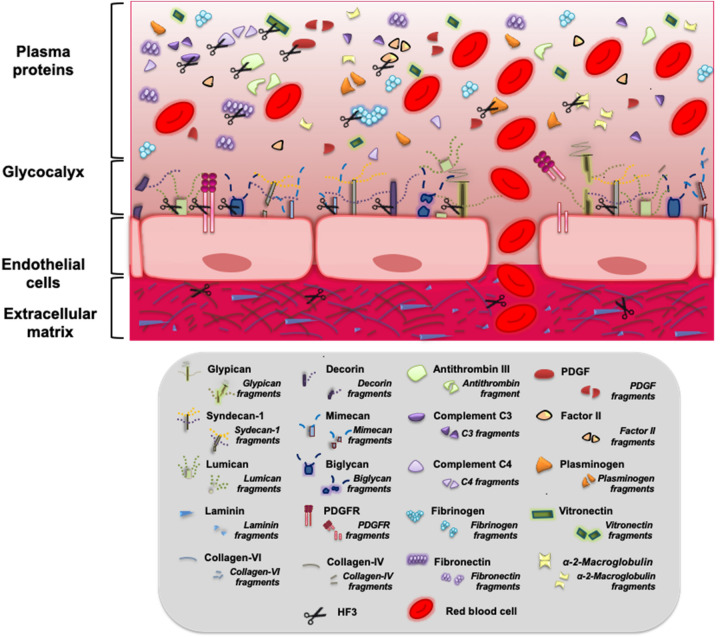Figure 8.
Schematic illustration of different proteins and proteoglycans that are cleaved in vitro by HF3. Components of the ECM, of the endothelial cell membrane, of the endothelial glycocalyx, and of plasma are potential targets of HF3, as reported in this and in former studies, and cited throughout this article. Some of these proteins and proteoglycans have also been shown to be cleaved in vivo, either due to the direct activity of HF3 or by tissue proteinases activated in the inflammatory/hemorrhagic scenario generated by HF3 in the mouse skin, culminating in the disturbance of hemostasis, and in the destabilization of the microvasculature via disruption of glycocalyx integrity, of cell–cell and cell–ECM interactions.

